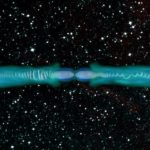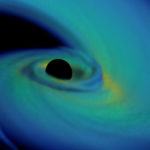In this podcast, the Radio Free HPC team discusses how the news of the cool visualization of an actual black hole leads to interesting issues in HPC land. “The real point: the daunting 1.75 PB of raw data from each telescope meant a lot of physical drives that had to be flown to the data center. Henry leads a discussion about the race between bandwidth and data size.”
How Extreme Energy Jets Escape a Black Hole
Researchers are using XSEDE supercomputers to better understand the forces at work at the center of the Milky Way galaxy. The work could reveal how instabilities develop in extreme energy releases from black holes. “While nothing – not even light – can escape a black hole’s interior, the jets somehow manage to draw their energy from the black hole.”
When Neutron Stars and Black Holes Collide
Working with an international team, scientists at Berkeley Lab have developed new computer models to explore what happens when a black hole joins with a neutron star – the superdense remnant of an exploded star. “If we can follow up LIGO detections with telescopes and catch a radioactive glow, we may finally witness the birthplace of the heaviest elements in the universe,” he said. “That would answer one of the longest-standing questions in astrophysics.”






